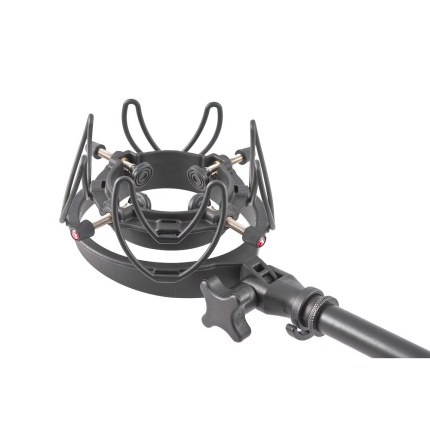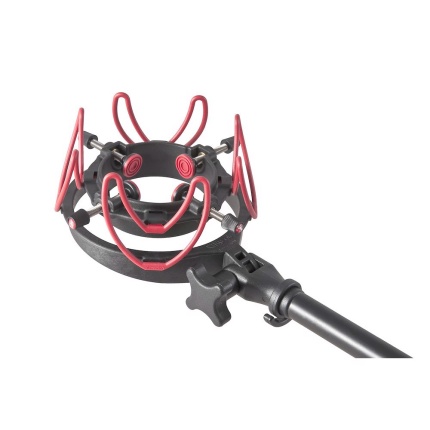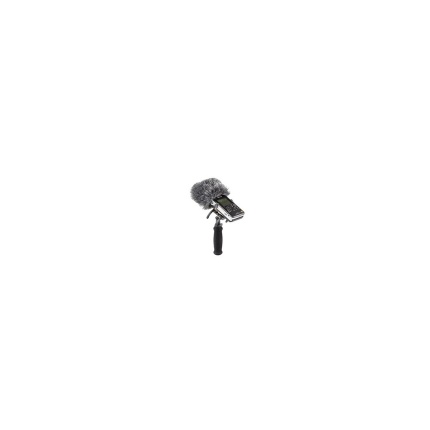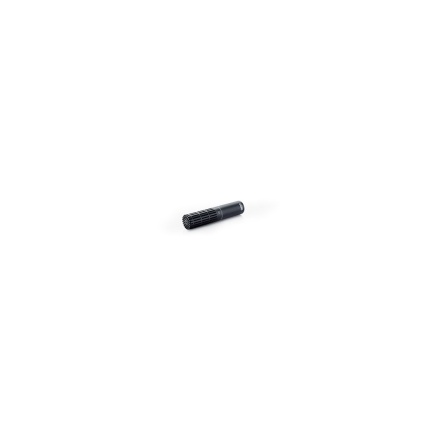- FAQ
- Spares, Repairs and Care
Do you have Connboxes with detachable LEMO cables?
We have several Connboxes with detachable LEMO tails at the mic input stage (all terminating in Binder):
Connbox CB5
http://mymic.rycote.com/products/connboxes-cables/connboxes/connbox-cb5-lemo-detachable/
Connbox CB6
http://mymic.rycote.com/products/connboxes-cables/connboxes/connbox-cb6-2lemo-detachable/
Connbox CB7
http://mymic.rycote.com/products/connboxes-cables/connboxes/connbox-cb7-2lemo-long-detachable/
Connbox CB12
http://mymic.rycote.com/products/connboxes-cables/connboxes/connbox-cb12-2-lemo-detachable/
The following video provides a brief overview of our range Mono & Stereo Connboxes:
My Røde Videomic suspension is broken. Where can I purchase a replacement?
In the first instance -- and since this issue is associated with a Røde product -- please get in touch with their support team directly:
http://www.rode.com/contact
Where can I purchase the NN9204 Anti-Vibration Cable (Multipin-to-Multipin) for the Soundfield SPS200?
I'd like to install the Tac!t system in the Connbox output cable. Is this possible?
This is a custom workaround, and in order for it to be undertaken, you will need to purchase the individual PCB (holding Tac!t's filter circuitry) that normally fits inside the unit's XLR-3M connector. You can then de-solder the XLR-3M Connbox output cable connection and add the Tac!t.
Product details for this special order are as follows:
Description: Tac!t (PCB Only)
Order Code: 017029
Once purchased, this is a strictly non-return item since it needs to be soldered in place by the customer. For soldering instructions/schematics, please contact a Rycote Technical Specialist here.
Important: The Tac!T PCB only fits inside the Neutrik XX-series of 3-pin XLR connectors.
Order Code: 017029
Once purchased, this is a strictly non-return item since it needs to be soldered in place by the customer. For soldering instructions/schematics, please contact a Rycote Technical Specialist here.
Important: The Tac!T PCB only fits inside the Neutrik XX-series of 3-pin XLR connectors.
Can I purchase replacement, detachable XLR to Binder tails for my Connbox?
Yes.
There are several options in terms of length (measured based on exposed cable). If in doubt, please consult a Rycote technical specialist here to establish which length you need.
MT90XLR (90mm XLR Tail)
Product Code: 017001
NB: Product made to order; not available on website.
Current UK List Price: £40.40, ex VAT
MT110XLR (110mm XLR Tail)
Product Code: 017002
NB: Product made to order; not available on website.
Current UK List Price: £40.40, ex VAT
MT180XLR (180mm XLR Tail)
Product Code: 017003
NB: Product made to order; not available on website.
Current UK List Price: £40.40, ex VAT
How should I care for my Windjammer®?
In order for the product to operate at its maximum effectiveness, it is vitally important that the pile of your Windjammer® remains in prime condition. Please follow these care guidelines:
1. Brush the fur frequently to keep the pile soft and clean. A special brush is provided free of charge with all Windjammers for this purpose.
2. After exposure to moisture (e.g. rain, thick fog), shake the Windjammer thoroughly to remove any excess moisture and allow to dry naturally.
Important: Never tumble-dry or use a hairdryer on the Windjammer, since this will almost certainly damage it beyond repair! Please note that there are ways for us to establish if this has been done by examining the product internally.
3. If absolutely necessary, the Windjammer can be carefully hand-washed in mild, Woolmark-approved detergent such as Ecover Delicate laundry liquid. Allow to dry naturally and then brush.
4. When the Windjammer is not being used, turn it inside out. This not only saves space in your kit bag or flight case, but also protects the fur. A quick shake will restore the original pile after it has been reversed.
5. Keep the Windjammer away from hot lights and overhead fixtures on-set, which may singe or damage the fur.
Can I purchase replacement O-rings/elastics for a pre-Modular Rycote Windshield?
It is possible, but we don't recommend it; instead, you can upgrade your existing suspension with our advanced Lyre® technology.
Lyres are a unique Rycote suspension design superseding older elastic and silicone O-ring solutions. They are essentially flexible plastic cradles with specially-shaped, inner soft grips designed to hold microphones securely and noiselessly. They offer vastly improved performance and reliability, and their effectiveness has been repeatedly proven in the harshest recording conditions by professionals worldwide.
The vast majority of older suspensions are upgradeable to Lyre-based versions using the following product:
http://mymic.rycote.com/products/lyre/pre-modular-lyre-upgrades/
Do you manufacture boom poles? If so, can I order spare parts?
Our range of boom poles was discontinued in early 2015, and we do not have any plans to resume manufacture at this time. If you have a technical issue with a product from this discontinued range, please get in touch with a Rycote technical specialist here.
Please note that due to discontinuance, spares for Rycote boom poles are in limited supply, and it may not be possible to resolve some technical issues since we can only replace parts from our remaining stock. (We are unable to offer full replacements, for the same reason.)
Can I purchase replacement, detachable LEMO to Binder tails for my Connbox?
Yes.
Replacement LEMO to Binder tails come in two main lengths:
MT110LEMO, 110mm LEMO Tail (Binder Terminated)
Product Code: 017005
NB: Product made to order; not available on website.
UK List Price: £57.00, ex VAT
MT130LEMO, 130mm LEMO Tail (Binder Terminated)
Product Code: 017006
NB: Product made to order; not available on website.
UK List Price: £57.00, ex VAT
If in any doubt about the length of cable required, please consult a Rycote technical specialist here.
Can I purchase replacement, detachable MZL to Binder tails for my Connbox?
Yes.
Please note that MZL to Binder tails are only available in one length (measured based on exposed cable). If in any doubt about the length of cable required, please consult a Rycote technical specialist here.
MZL Tail, 130mm (Binder Terminated)
Product Code: 017026
NB: Product made to order; not available on website.
UK List Price: £75.75, ex VAT
Which Connbox do I need for the Røde NT4?
For the NT4, you will need a Connbox CB 4. More information (including order codes) for this product can be found via the following link:
http://mymic.rycote.com/products/connbox-cb4-xlr-5f/
3/8" Thread Standards
For every Rycote product which gets attached to a boom pole or mic stand, there is a female 3/8" thread.
The accepted standard of thread for all boom poles is the 3/8" British Standard Whitworth (BSW), with 16 teeth per inch (TPI); however, the close similarity to another thread standard, UNC, has meant that some manufacturers are now producing 3/8" 16 UNC on their poles & stands rather than 3/8" Whitworth.
The difference between the two threads is very small -- a matter of 5°, in fact -- but it has significant implications for fitting the two thread types together. Put simply, they won't fit. As you can see in the attached drawing (see end of article), the BSW has a thread angle of 55° and the UNC 60°; so a male BSW will fit into both BSW & UNC, but a male UNC will not fit into the industry standard BSW.
To prevent this causing compatibility issues, Rycote has manufactured all of its threads since 2003 using the following standards:
- Female 3/8" UNC (Brass)
- Male 3/8" BSW (Stainless steel)
This means that all Rycote products -- whether female or male threaded -- will fit together with other accessories using 3/8" threads.
If you have any questions about this, or any of our other products please don't hesitate to let us know.
Can I get a thinner/shorter Tac!t cable?
We don't currently manufacture a thinner or shorter version of the Tac!t; however, for a custom workaround, we can sell the PCB that normally fits inside the Tac!t's XLR-3M connector. You can then solder this onto an individually sourced, shorter cable.
Product details for this special order are as follows:
Description: Tac!T (PCB Only)
Order Code: 017029
Once purchased, this is a strictly non-return item since it needs to be soldered in place by the customer. For soldering instructions/schematics, please contact a Rycote Technical Specialist here.
Important: The Tac!T PCB only fits inside the Neutrik XX-series of 3-pin XLR connectors.
Order Code: 017029
Once purchased, this is a strictly non-return item since it needs to be soldered in place by the customer. For soldering instructions/schematics, please contact a Rycote Technical Specialist here.
Important: The Tac!T PCB only fits inside the Neutrik XX-series of 3-pin XLR connectors.
Can I print a custom logo or design on one of your Mic Flags?
Yes, absolutely! We have supplied custom-printed mic flags for studios, performing artists, news/media and arts organisations worldwide.
There are a few simple guidelines to follow for custom-printed mic flags, depending on where you are ordering from. In the first instance, please open a ticket with a Rycote Technical Specialist, letting us know you want to order custom-printed mic flags in the subject line.
We can then provide instructions on how to place the order.
I've lost a part for my windshield, and I don't know what it's called.
If you have lost a part for your windshield, in the first instance please get in touch with a Rycote technical specialist.
Via the support platform, you should be able to submit photos of your windshield along with a written description of the missing part. This will allow the specialist to determine the necessary replacement(s).
Submitting detailed pictures showing the area of the windshield the part is missing from -- along with a concise, written description of the issue -- will greatly speed up the process of finding a replacement.
Should I treat my Windjammer® with water repellent substances?
Our Windjammers® are already pre-treated with a very fine layer of Scotchguard.
Adding any further quantities can result in unwanted noises. Water repellents may also seriously degrade the HF transparency of the backing, so applying them is not recommended.
Why does my Rycote Windjammer® shed fur?
Rycote's Windjammer (and other products that use synthetic fur) will shed fibres immediately after production, and during regular use over the course of their lives. This is perfectly normal.
Our fur has been painstakingly designed to offer the highest possible degree of industry-leading wind protection with minimal high frequency loss, and achieving this balance comes down to the manufacturing process: specifically, the use of pile backing with a single weave, as opposed to conventional, double-woven backing. During production, the fur strands are literally 'pierced' through the back of the Windjammer fabric (pile), and a light layer of lacquer is applied to hold them in place; this results in greatly increased acoustic transparency.
The critical element of this process is the lacquer application: too much, and the Windjammer starts behaving as if double-woven, with significant high frequency loss; too little, and the strands will shed very easily. Reaching a compromise means that some fibres will inevitably shed in normal use.
We check and test our Windjammers after production in order to make sure that this compromise has been precisely reached, and the vigorous shaking that forms a key part of this process usually gets rid of very loose strands.
Caring for your Windjammer is hugely important for maintaining its performance, and if the fur becomes matted with dirt, dust or other substances, some careful cleaning with light, Woolmark-approved hand washing detergent is advised. (If washed, Windjammers must always be allowed to air dry: never tumble-dried.) In addition, it's essential to comb the stands regularly (we include a small comb in the box for this purpose), and turn it inside out when not in use.
The only reason for concern would be if huge clumps of fur are tearing off or falling away; however, since all of our products are checked and re-checked to the highest possible quality standards, this is pretty much unheard of.
What are Lyres®, and how do they work?
Lyres® are a unique Rycote suspension design superseding older elastic and silicone o-ring solutions.
They are essentially flexible plastic cradles with specially-shaped, inner soft grips designed to hold microphones securely and noiselessly. Retrofittable across a significant number of our products, they offer vastly improved performance and reliability, and their effectiveness has been repeatedly proven in the harshest recording conditions by professionals worldwide.
Since a microphone suspension essentially functions as a spring system in terms of raw physics, to understand more about how Lyres work we need to consider the four main properties of such a system: mass, compliance, damping and resonance.
In a suspension, the mass will always consist of the microphone/microphones.
Compliance can be understood simply as 'wobbliness'. The aim of any suspension is to allow the microphone capsule(s) to remain as static as possible while the support moves, and this requires a level of compliance suited to the weight and specifications of the capsule. The Z axis is the axis along which microphone diaphragm movement occurs, and is naturally the most sensitive to disturbances; Lyres are therefore designed to be reasonably compliant along this axis, whilst providing limited movement along the horizontal (X) and vertical (Y) axes. The level of Lyre compliance is regulated using a Shore (hardness) rating, with higher ratings indicating stiffer, less compliant suspensions suitable for heavier and longer mics. Duo-Lyre® systems come in 68 and 72 Shore hardnesses, and Single Lyres come in Shore ratings of 62, 72 and 82; this selection accommodates the vast majority of industry standard microphones.
Damping is inherent in the elastomeric plastic (Hytrel) used in the Lyres' construction. This plastic maintains its characteristics across a wide temperature range, is virtually indestructible, and can even be tied in knots without snapping or suffering shape distortion.
Resonance is a frequency reinforced or amplified through a spring system's physical construction, and should ideally occur below 20Hz in suspensions. A typical elastic suspension will have a substantial resonance at about 32Hz, with a second harmonic resonance at 64Hz and others above. The Lyre system improves on this dramatically, with resonances at approximately 14.5Hz and 29Hz.
By regulating these four elements accordingly, the Lyre suspension system offers significantly improved performance over other designs.
Additional Information (based on previous Zendesk queries):
To elaborate on the design a little: Our Single Lyres come in three main versions (62-, 72- and 82-Shore). 62 is the most compliant -- or 'wobbly' -- and is suitable for light microphones, whilst 82 is the least compliant and has been designed for heavier/longer mics.
Duo-Lyres come in 68- and 72-Shore ratings, and are used in many cases for mics with added, slip-on wind protection (e.g. Super-Softie®) or bulbous heads: basically any design that is 'front heavy' and needs extra stability. Duo-Lyres are also commonly used to provide extra support for Mid-Side configurations (e.g. Sennheiser MKH 50/40 + 30), where the lower mic needs to be grasped firmly. They can also be used for heavier mics in much the same way as the 82-Shore Single Lyres, where the user needs to be sure of extra support.
Please note also that Lyres can be combined: for example, you could use a 62-Shore Single Lyre on the front of a suspension, and a 72-Shore Single Lyre on the rear, in order to fine-tune overall balance and compliance with a rear-heavy mic.
In summary, there's no 'right' way to combine Lyres, and so we chose to release the vast majority of our products with pre-fitted 72-Shore Single and 68-Shore Duo versions. This accommodates the vast majority of industry-standard mics.
Mark F.
What's the hex key size used on Rycote Lyres®?
All our Lyres® are screwed in with a hex-key driver, which has a Metric size of 2.0mm AF.
We don't sell them as an accessory, but we can send them out if you are unable to find one locally.
Alternatively, an online hardware store like McMaster Carr might be a quick solution: http://www.mcmaster.com.
The XLR-3F connector in my windshield is too tight. Is there a fault with the cable?
We use only the highest quality Neutrik connectors for our windshield cables, so if there is an issue with tightness or poor fit, it's unlikely to be associated with either of the connectors.
In the first instance, please check all microphone pins to ensure correct alignment and stability. Make sure you also check for any dirt or debris that may have built up around the pins, or at the base of the connector.
If you are still having issues, please get in touch with a Rycote Technical Specialist to resolve the issue.






